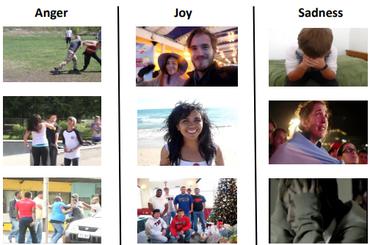Video Emotion Recognition
7 papers with code • 2 benchmarks • 5 datasets
Most implemented papers
MIMAMO Net: Integrating Micro- and Macro-motion for Video Emotion Recognition
Spatial-temporal feature learning is of vital importance for video emotion recognition.
Emotion Recognition in Audio and Video Using Deep Neural Networks
Humans are able to comprehend information from multiple domains for e. g. speech, text and visual.
Technical Report for Valence-Arousal Estimation on Affwild2 Dataset
In this work, we describe our method for tackling the valence-arousal estimation challenge from ABAW FG-2020 Competition.
FV2ES: A Fully End2End Multimodal System for Fast Yet Effective Video Emotion Recognition Inference
In the latest social networks, more and more people prefer to express their emotions in videos through text, speech, and rich facial expressions.
Weakly Supervised Video Emotion Detection and Prediction via Cross-Modal Temporal Erasing Network
Automatically predicting the emotions of user-generated videos (UGVs) receives increasing interest recently.
eMotions: A Large-Scale Dataset for Emotion Recognition in Short Videos
The prevailing use of SVs to spread emotions leads to the necessity of emotion recognition in SVs.
MultiMAE-DER: Multimodal Masked Autoencoder for Dynamic Emotion Recognition
In comparison to state-of-the-art multimodal supervised learning models for dynamic emotion recognition, MultiMAE-DER enhances the weighted average recall (WAR) by 4. 41% on the RAVDESS dataset and by 2. 06% on the CREMAD.


 CREMA-D
CREMA-D
 Ekman6
Ekman6
 CANDOR Corpus
CANDOR Corpus
 L-SVD
L-SVD
